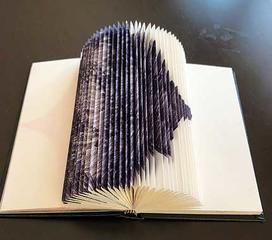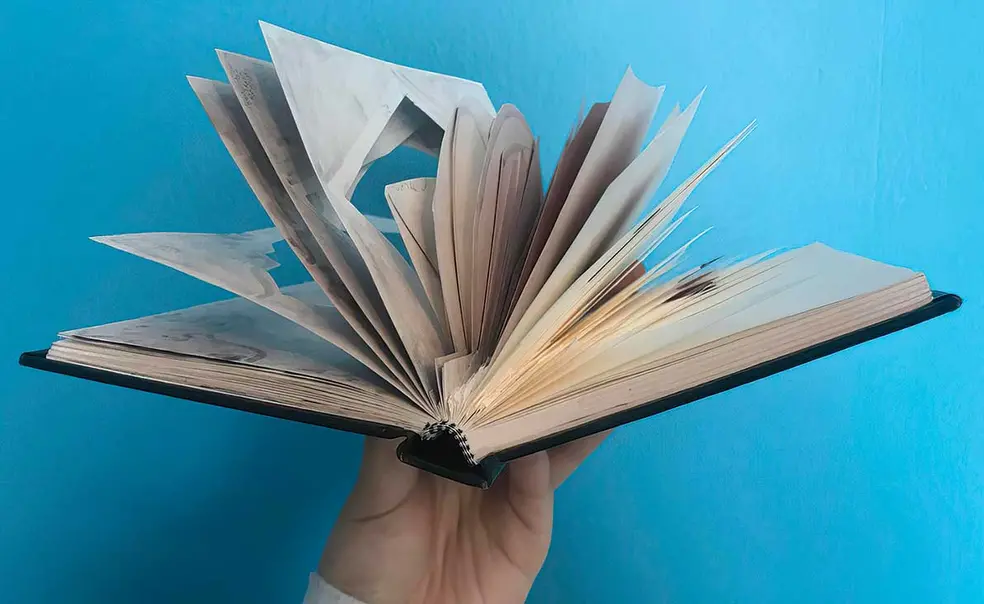Learning ‘Through Making,’ Students Explore Why Art Matters
‘They might discover an art form that they didn’t realize they love,’ said theater professor Stacy Wolf
What is creativity? How do artists create work? And why does art matter? Those are some of the questions tackled in the course “Introduction to Art Making,” which gives students the chance to study five artistic genres and gain a hands-on understanding of how artists work. The students learn about creative writing, theater, dance, music, and visual arts from nine instructors, and synthesize those lessons by creating music, stories, art objects, and performances.
“We hope that the students will feel their creativity ignited, or re-ignited, and that they might discover an art form that they didn’t realize they love,” said professor of theater Stacy Wolf. Conducting the course entirely online this semester means that every aspect “was created afresh for this historical moment and for the constraints, and opportunities, of remote learning,” she said. In a class on creativity, the restrictions — and freedoms — of communicating via a screen may prompt students to get even more inventive, she points out.

During the first class, students dove briefly into five artistic fields. For creative writing, they wrote five lines of poetry, each line composed of five words. For dance, they created a gesture that defined the state of the planet today. For visual arts, they drew something that was in motion. For theater, they created a tableau in small groups. For music, they used everyday objects and whatever materials they had on hand — such as a pad of Post-it notes or a water bottle — to create sounds. “Go find various sounds in your environment — tap, scrape, rip, strike, rub, hit, ping various surfaces and textures with various materials. Play with proximity: how loud it is right by your ear or microphone, or far away,” music instructor Bora Yoon *16 told the students. “Music can be found in everyday sounds and objects. And if you feel intimidated that you’re not a composer or a musician, rest assured that if you can appreciate music, dance to music, feel it in your body, sway and respond to it, then from there is the capacity to create.”
Exploring five artistic mediums in one course gives students the opportunity “to try their hand as creators and learn how one form of creativity can inform the other,” said Yoon, a fellow in the Interdisciplinary Doctoral Program in the Humanities who is completing a Ph.D. in music composition at Princeton.
Over the semester, students created sonic collages with recordings made of sounds they encountered. They also learned about grooves and countergrooves, embellishments, and background chords, and used digital software for collaboration. They donned comfortable clothes and kept their computers’ cameras trained on themselves as they choreographed dances together, accompanied by improvised music by other students. For the creative-writing sequence, students penned work inspired by a photo of a crowd that was taken during the pandemic. They studied lighting design and wrote a review of a play. They filled a sketchbook throughout the semester to become fluent in drawing. For a final project in visual arts, they created a collage from magazine clippings, flyers, cereal boxes, and other found items to reflect important events in their lives.
The many field trips that are normally a part of the class became virtual. Students participated in an online discussion with novelist Kimberly King Parsons; watched a contemporary dance opera and spoke to its Brussels-based choreographer; saw a documentary about the musical journey of members of the Philadelphia Orchestra; discussed artistic expression with visual artist Ellie Ga, who is based in Sweden; and watched a performance of Much Ado About Nothing that was performed in 2019 as part of the Public Theater’s Shakespeare in the Park series.
Colleen Asper, a lecturer in visual arts, said the course helps develop the visual literacy that is needed to decipher the world we live in. “How and why something was made and how it might be made differently are foundational questions for artists,” she said. “I want the students to experience these questions through making.”












No responses yet